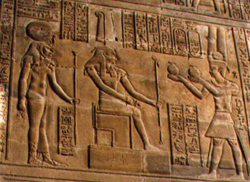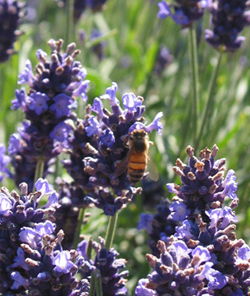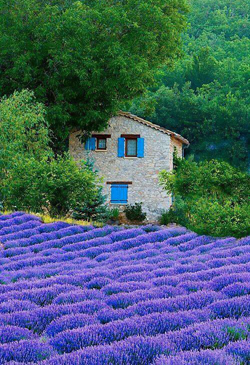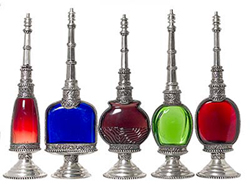ACEITES ESENCIALES DE GRADO TERAPÉUTICO
ADVERTENCIA: Efectos secundarios pueden incluir niveles más bajos de estrés y ansiedad, aumento de productividad, aumento de la libido, incremento en años de vida funcional, mejor memoria y una personalidad más agradable.

At the dawn of civilization, when people first discovered the enchanting and powerful fragrances of plants, the Oil Story begins.
History's most advanced ancient civilizations, the Egyptians, Greeks, Romans, and Chinese, all relied on nature's essential oils to increase and maintain health of the body, mind, and spirit.
From the earliest days on earth, our ancestors used the fragrant plants to heal, uplift, anoint, and empower their lives. Why should fragrance, or aroma, be so powerful, and so sought after by people all over the world throughout history?
Consider for a moment
Why do you give flowers as a sign of love, good wishes, or blessing? What is so magical about the fragrance of a rose? The scent of a pine forest? Is it possible that these fragrances are not only beautiful but also life changing?

The answer appears not only in the stories of our ancient ancestors, but in the literature of modern science as well. Modern day discoveries help us to understand our need for plants as something more than just food, decoration and shelter. Thanks to laboratory research, we now know something about the chemistry and action of plant fragrances, which come from the unique and mysterious aromatic liquids hidden in various parts of plants—their leaves, petals, roots, seeds, bark, stem, and even fruit.
These aromatic liquids are called "essential oils" now, but they were called "precious oils" and "sacred oils" in ancient times. They were used anciently not only for physical well-being, longevity, beauty, courage, wealth and political power, but for sacred purposes in temples, religious rituals, and at births and deaths.
Typically, essential oils are very light to the touch (not greasy like cooking oil) and evaporate readily, releasing their aromas into the air.
Their function in nature is to keep plants healthy, free of infection, to repel harmful insects, and to communicate—to each other, to insects, to animals, and to us! As it turns out, the way they affect us is a lot like the way they affect plants, acting on our immune systems, our muscles, internal organs, skin and circulation, and even our emotions, sometimes all at once!
How?
Plant fragrances are made of nature's ancient molecules: complex substances whose structure allows them to pass easily and quickly through our skin, and through the cell membranes of every cell in our bodies. We breathe them in and instantly, as they touch the brain, the molecules of essential oils enliven neurons, inspire emotions, awaken immune response, stimulate hormones, which can then enhance energy, digestion, mental clarity, body temperature, circulation, and the feeling of being connected to nature.

We inhale, and then… aaaaahh. We feel the magic. Or, we mix them with a few drops of vegetable oil (a completely different kind of oil!) and gently apply them to our skin, on the bottoms of our feet, or in a massage. The molecules pass easily through our skin, muscles, veins and connective tissue to bring their therapeutic within moments to the whole body!
At least 30 percent of prescription drugs in the United States are based on naturally occurring compounds from plants. Each year, millions of dollars are allocated to universities searching for new therapeutic agents that lie undiscovered in the bark, roots, flowers, seeds, and foliage of jungle canopies, river bottoms, forests, hillsides, and vast wilderness regions throughout the world.
As the most powerful part of the plant, essential oils and plant extracts have been woven into our history. Essential oils have been used medicinally to kill bacteria, fungi, and viruses. They provide exquisite fragrances to balance mood, lift spirits, dispel negative emotions, and create a romantic atmosphere. They can stimulate the regeneration of tissue or stimulate nerves. They can even carry nutrients to, and oxygenate the cells.
Just one drop of an essential oil can carry as powerful a message as an entire bouquet of flowers. One drop can carry as bio-chemically complex a message as a food or a medicine: It can stimulate our immune activity, open our lungs, enhance our hearing, ease tired and achy muscles, improve flexibility and so much more!
While essential oils are neither food nor medicine, they sometimes act as if they were! They are, in a word, mysterious. They are also unique in nature, different from any other natural product you have ever tried, enhancing every part of your body, mind, and spirit, with just one or two drops at a time.
Please note
It's really important to understand that the safety and life-changing effects of essential oils are dependent entirely on their purity and their quality. Generally speaking, essential oils that you find in department stores, and even health food stores, are of uncertain quality at best.
What makes an essential oil therapeutic grade?
Essential oils are distilled from aromatic volatile liquids distilled from shrubs, flowers, trees, roots, bushes, and seeds having powerful healing properties.
The chemistry of essential oils is very complex: each one may consist of hundreds of different and unique chemical compounds. Moreover, essential oils are highly concentrated and far more potent than dried herbs. The distillation process is what makes essential oils so concentrated. It often requires an entire plant or more to produce a single drop of distilled essential oil.

Essential oils are not simple substances. They are mosaics of hundreds―or even thousands―of different chemicals. Any given essential oil may contain anywhere from 80 to 300 or more different chemical constituents. Additionally, essential oils can be distilled or extracted in different ways that have dramatic effects on their chemistry and medicinal action.
But did you know that only 2 percent of essential oils sold in the United States are true Therapeutic Grade?
Standards have been developed by the Association French Normalization Organization Regulation and adopted by the International Standards Organization to distinguish true Therapeutic Grade essential oils from inferior oils merely used for fragrance. This is a growing concern as demand for essential oils increases due to health-conscious consumers desiring to ward off today's stressful lifestyles—thus diminishing the supply.
True Therapeutic essential oils are immune-system stimulating, anti-viral, anti-infectious, anti-bacterial, anti-microbial, antiseptic, anti-tumoral and even anti-fungal.
Gas Chromatography Purity Testing
Gas chromatography is the scientific method employed to differentiate impostors from the real McCoys. It measures whether basic components of an essential oil occur in a precise percentage. If only two primary constituents do not meet precise percentages, the oil cannot be AFNOR or ISO certified—although the oil may qualify as Grade A. Gas chromatography can also identify oils that have been synthetically manipulated. The producer needs to go the extra mile and request the use of a 50-meter column during gas chromatography testing. Most U.S. labs utilize a 30-meter column, which is adequate for vitamins or minerals—but is certainly not adequate for the chemical complexity of essential oils. An oil's purity can be affected by myriad environmental factors: geographical region, altitude, climate, soil, growing conditions and harvest method and season. Even the time of day the plant is harvested can affect the oil's purity! Producing genuine Therapeutic Grade essential oils is indeed a fine art. It is important to do painstaking research insisting on knowing harvest location, methods utilized to extract the oils, and data reports assuring the oil's character.
Proper Steam Distillation
The distillation method also affects an essential oil's purity—and Therapeutic Grade oils mandate preserving as many of the plant's compounds as possible. Therapeutic Grade essential oils must only be distilled in stainless steel cooking chambers at lowest possible pressure and lowest possible temperature. Extremely high temperature and high pressure, or contact with chemically reactive metals such as copper or aluminum can quickly destroy delicate compounds.
Every essential oil must be 100% Pure Therapeutic Grade. Essential oils must be obtained by steam distillation of the plant's volatile oils. And derived from the first distillation—never the second, third or fourth. Oils that are subjected to high heat and pressure have a distinctly simpler (and inferior) profile of chemical constituents, since excessive heat and temperature fractures and breaks down many of the delicate aromatic compounds within the oil-some of which are responsible for its therapeutic action. In addition, oils that are steam distilled are far different from those that are solvent extracted.
Of greatest concern is the fact that some oils are adulterated, engineered, or "extended" with the use of synthetic chemicals. For example, pure frankincense is often extended with colorless, odorless solvents such as diethylphthalate or dipropylene glycol. The only way to distinguish the "authentic" from the "adulterated" is to subject the essential oil to rigorous analytical testing using state-of-the-art gas chromatography, mass spectroscopy, and NMR (nuclear magnetic resonance).
No Additives
The primary components of 98 percent of all essential oils in the market are synthetic. They should not be used for therapeutic applications, and they potentially carry risks. Only pure essential oils should be used for therapeutic purposes. At best, synthetic oils may not produce desired therapeutic results—at worst, they could possibly be toxic.
They must be free of added water, alcohol, carriers or other dilutents. No chemical solvents are added during distillation, and nothing is added to the oil after distillation. They must be certified organic. Although organic certification is an intensely painstaking process that a few of our suppliers are still striving to attain, any oils we stock that are not yet certified organic are guaranteed to be free of pesticide and chemical residues.
BE SURE YOUR ESSENTIAL OILS ARE THERAPEUTIC GRADE
Young Living independent distributors proudly share this information. Contact us to share even more information.
Ask the following 17 questions from the supplier:
|
Questions |
YL |
Other |
|
Does the supplier adhere to SEED authentication? |
|
|
|
Do they own organic farms around the world to personally grow, distill and bottle their essential oils? |
|
|
|
Do they research plant species to select those for optimal therapeutic benefits, document their source, and monitor the cultivation process to ensure the chosen plant species is used for the oil extraction? |
|
|
|
Can you go visit their farms were they grow their different plants for oil distillation? |
|
|
|
Do the farms have labs on site to test for determination of the exact day and time of harvest to insure optimal quality? |
|
|
|
Are the distillation facilities part of the farms to ensure oils are freshly distilled, or do herbs wait days to be processed and lose potency? |
|
|
|
Do they personally inspect the fields and distilleries where the herbs are grown and distilled? |
|
|
|
Do they use low pressure and low temperature to distill their essential oils to preserve all of the fragile chemical constituents? |
|
|
|
Are the distillation cookers fabricated from costly food-grade stainless steel alloys to reduce the likelihood of the oils chemically reacting with metal? |
|
|
|
When oils are produced by a partner grower, do they visit the growers - anywhere in the world - and verify the plant from seed to growing, to distilling, to bottling? |
|
|
|
Do they verify that no synthetic or harmful solvents or chemicals are being used? |
|
|
|
Do they subject each batch of essential oil through multiple chemical analyses to test for purity and therapeutic quality? |
|
|
|
Are tests also performed by independent labs? |
|
|
|
Do they have their own fully equipped testing laboratory to verify oil's composition? |
|
|
|
Do they keep the oil submitted to them (including their own) under lock and key until all tests are completed and confirming that the oils are of the highest therapeutic benefit? |
|
|
|
Does the supplier bottle directly from the still without modification of any kind? |
|
|
|
How many years has the supplier been doing all of this? |
23 |
*Note: YL = Young Living Essential Oils
How to Maximize the Shelf Life of Your Essential Oils
The highest quality essential oils are bottled in dark glass. The reason for this is two-fold: glass is more stable than plastic and does not "breathe" the same way plastic does. Also, the darkness of the glass protects the oil from light that may chemically alter or degrade it over time.
After using an essential oil, keep the lid tightly sealed. Bottles that are improperly sealed can result in the loss of some of the lighter, lower-molecular-weight parts of the oil. In addition, over time, oxygen in the air reacts with and oxidizes the oil.
Essential oils should be stored away from light, especially sunlight-even if they are already stored in amber glass bottles. The darker the storage conditions, the longer your oil will maintain its original chemistry and quality.
Store essential oils in a cool location. Excessive heat can derange the molecular structure of the oil the same way ultraviolet light can.
CANCER AND ESSENTIAL OILS
Please go read all about d-limonene and its effect on cancer.
THERAPEUTIC GRADE ESSENTIAL OILS ― YOUNG LIVING

The adjacent image is an unadulterated Therapeutic Grade Frankincense from Young Living Essential Oils. The Boswellia sacra tree grows in the Arabic Peninsula. Their resin, the frankincense, is collected during dry periods. The trees are tapped by slashing the bark and allowing the exuded resins to bleed out and harden. These hardened resins are called tears. There are numerous species and varieties of frankincense trees, each producing a slightly different type of resin. Differences in soil and climate create even more diversity of the resin, even within the same species.
Omani frankincense is regarded the world over as the rarest, most sought-after aromatic in existence. After careful negotiations with Omani officials, Gary Young was granted permission to build a Young Living distillery in-country, and take the resulting essential oil out of Oman. Until this partnership, no Omani frankincense had ever left the country, unless directly purchased by Saudi royals.
Omani frankincense is highly regarded as the frankincense of the ancients and the traditional spiritual oil of biblical times. Young Living's Sacred Frankincense marks the first time any Westerners have been able to experience these unique, spiritual properties.
YOUNG LIVING ESSENTIAL OILS WORLDWIDE
We are a certified distributor of Young Living Essential Oils so call (505)750-1455 to get the lowest prices on the web. Please contact us for therapy, product, classes and training information.
What Is An Essential Oil?

Plants contain complex and powerful substances known as essential oils. These are aromatic liquids derived from shrubs, flowers, trees, roots, bushes, and seeds. These distinctive components defend plants from insects, harsh environmental conditions, and disease. They are also vital for a plant to grow, live, evolve, and adapt to its surroundings. Referred to as the essence of the plant, pure essential oils not only protect the plant, but also determine its aroma.
Essential oils have been used throughout time dating back to 4500 BC. From perfumes and aromatherapy to cooking and medicinal purposes, essential oils have been used in everyday life for centuries. In modern days, research shows that pure essential oils can provide similar benefits to humans and animals that they give to plants.
Importance Of Quality
Many oils, touted as essential oils, are derived with harsh chemicals, diluted, or copied and produced in a lab. Cheap copies bring cheap results and have the potential to be toxic. Therefore, it is imperative to take great care in choosing high-quality essential oils.
How To Use Essential Oils
There are three basic ways to use essential oils: inhalation, topical application, and internal consumption. Read the Safety Guidelines and Tips prior to the use of any essential oil.
Inhalation
The inhalation of essential oils heightens the senses and can trigger numerous desired responses in the body. Below are several techniques used to inhale essential oils:

- Direct inhalation—simply smell them.
- Diffuse the oils using a Young Living diffuser which disperses the oil in a micro-fine vapor into the air. The Young Living diffuser will not heat the oils, thus ensuring full benefits, as extreme heat can damage important constituents in the oil.
- Fill a humidifier with water. Put a tissue or small cloth, sprinkled with a few drops of oil, in front of the escaping steam. (Do not put oil in your humidifier. It will float on top of the water instead of rising with the water vapor and may cause damage to your humidifier.)
- Carefully pour hot water into a bowl and add a few drops of oil. Cover your head and bowl in a tent-like fashion with a towel. Breathe deeply and slowly.
Limitación de Garantías: Por favor recuerde que la meditación no es un sustituto de la atención profesional o ayuda psiquiátrica si eso es lo que se necesita. Muchos médicos y psicólogos recomiendan la meditación junto con las terapias estándar.
